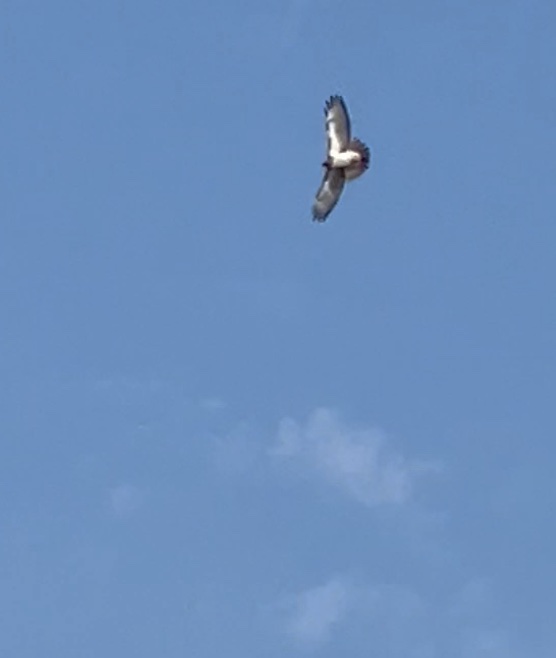What a wonderful pause to watch the beauty of this raptor in flight. On a day with a stiff breeze, this magnificent creature can waft effortlessly for a seeming eternity. Identifying give-aways on this raptor include the pale undertail and underwing coverts and its white belly. The Swainson’s Hawk is but one homage to British naturalist and famed illustrator William John Swainson (1789 – 1855), who’s name is associated with eight other birds including a toucan.
Here in Bosque County, Texas, birds of prey are observed frequently. This includes: falcons, owls, hawks, vultures, and eagles. For example, you may see a Coopers Hawk, Bald Eagle, Osprey, Red-shouldered Hawk, Red-Tailed Hawk, Sharp-shinned Hawk, Great Horned Owl, Broad-winged Hawk, Prairie Falcon, Peregrine Falcon, Barn Owl, Long-eared Owl, Rough-legged Hawk, Northern Harrier, Crested Caracara, American Kestrel, Black Vulture, Turkey Vultures, and of course the Swainson’s Hawk.
The home range for a Swainson’s Hawk is just a few square miles. The individual you see here likes to perch in the Hackberry trees on the sanctuary property. A hawk in these parts will catch voles, mice, rabbits, other birds, reptiles and a lot of insects. We observed one swooping down on a rodent a while back when I was shredding a pasture with a 6-foot rough cut mower and tractor…
Whilst on the ground, the hawk kneaded its quarry with its talons like a ball of dough. The hawk did that for several minutes before flying off with its prize. Consider the grip strength of this hawk. It’s about 200 pounds per square inch (three times that of us humans).
Hawks are known to follow tractors that are shredding grasses — allowing the tractor to act as their personal bushwhacker – flushing out hidden prey. So they are very observant and opportunistic when it comes to acquiring food. For an easy meal, they will also prey on chickens and other domestic fowl. We learned this the hard way, which is why we have covered aviaries and chicken houses now. Between the hawks and owls here, a chicken flock can be decimated in days once these predators sense they have no cover.
When gliding, a hawk’s soaring speed is about 30 miles per hour. When diving for prey, these birds can reach speeds of up to 120 miles per hour! The Swainson’s Hawk migrates between western North America and overwinters in South America in the fall. This individual is a bit late in migrating. Perhaps he’ll stay. A round-trip of these migratory raptors is over 12,000 miles putting them at the top of the raptor charts for long distance migration.

